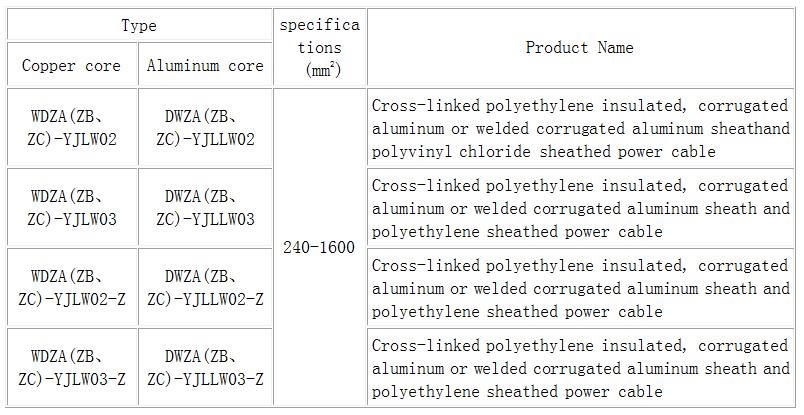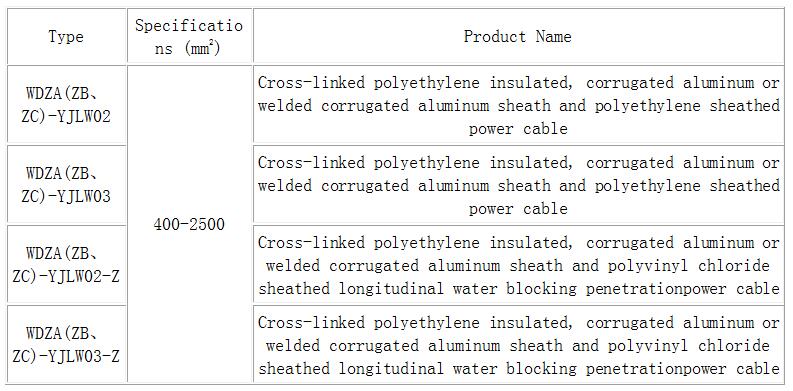110~220kV Venvironmental-friendly antibiosis XLPE cablesProduct number:WDZA(ZB、ZC)-YJLW 110~220
 Advisory
Advisory

ProductUsage:
This productis suitable for 110-220kV power transmission and distribution system for thetransmission of electrical energy, low smoke no accounting for the flameretardant performance higher than the national standard, widely used inairports, nuclear power plants, key water control projects, high-risebuildings, Chemical, metallurgy, petroleum, traffic and other flame-retardantproperties demanding places.
Implementationstandards :
110kV product implementationstandards: GB / T 11017 and GB / T 19666, the flame retardant properties inline with GB / T 18380 requirements;
220kV product implementationstandards: GB / T 18890 and GB / T 19666, the flame retardant properties inline with GB / T 18380 requirements.
Specifications and Name:
110kVenvironmental-friendlyantibiosis XLPE cables

220kVenvironmental-friendly antibiosis XLPE cables

Usefeatures:
1、Maximum rated temperature
Long-term maximum allowable operatingconductor temperature: 90 °C,Maximum operating temperature under short-timeoverload: 105 °C,Maximum operating temperature under short circuit (shortcircuit duration 5 s): 250 °C
2、Installation requirements
Cable laying shall not be restrictedby drop height; the ambient temperature for laying shall not be lower than 0 °C,and if the ambient temperature is lower than 0 °C, the cable shall bepre-heated.
2.1Minimum bending radius of cable
During cablelaying: 20D0; and Permanentinstallation: 15D0.
Note: D0 is measured outerdiameter of cable.
2.2Maximum allowable axial traction for cable installation, T (radial sidepressure at bend not being considered)
Conductor: T=K×Conductor section (kg)
Aluminum sheath:T=K×Aluminum sheath section(kg)
Where, the coefficient K=7kg/mm2for copper conductor and 4kg/mm2 for aluminum conductor and 2kg/mm2 for aluminum sheath.
2.3Maximumallowable side pressure when cable is bent, P
P=T/R≤500(kg/m), where T is axialtraction, and R is bending radius.


 Share
Share